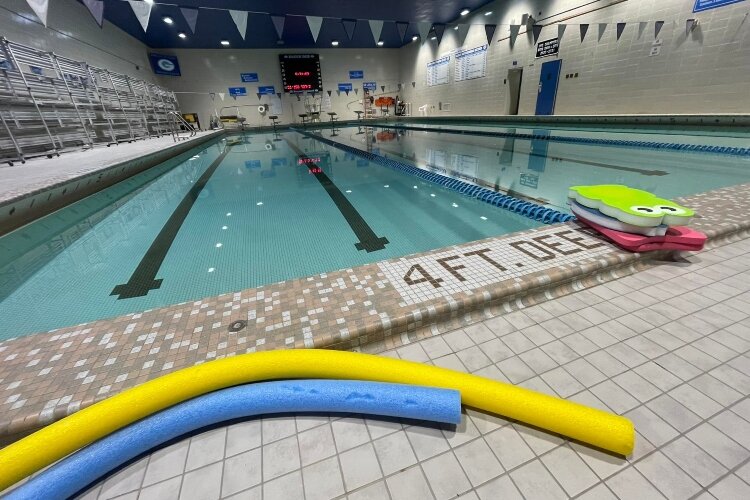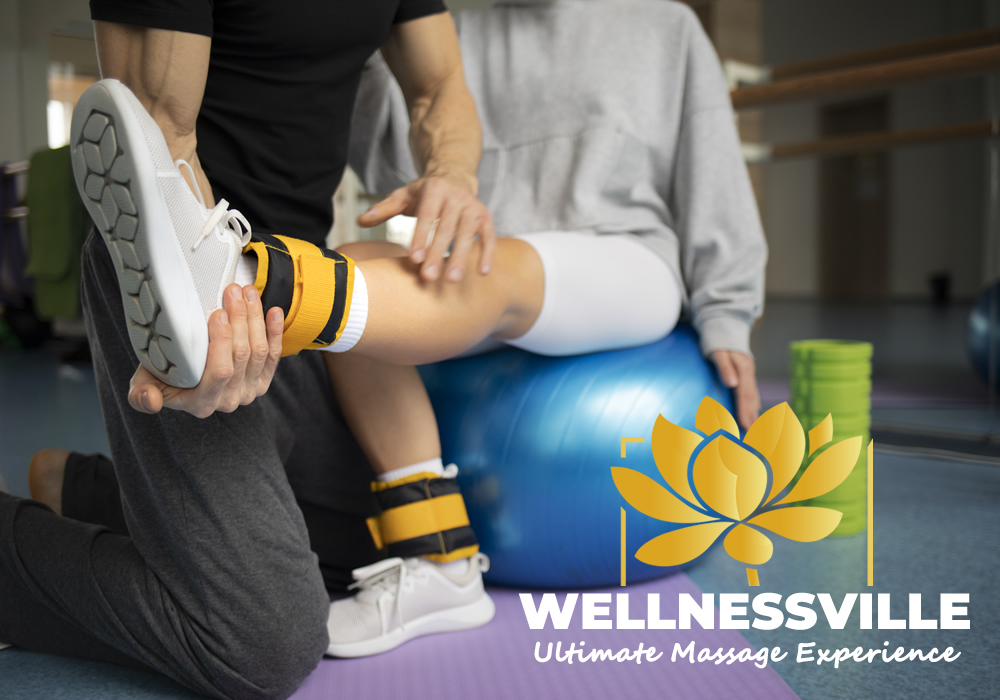Why is Swimming the Safest Sport: Dive into the Ultimate Safety of this Water Activity!
Swimming is the safest sport due to its low risk of injuries and minimal impact on the body, making it a popular choice for people of all ages and abilities. It provides a full-body workout, improves cardiovascular health, and increases muscle strength and endurance.
Whether you’re a beginner or an experienced athlete, swimming offers a multitude of benefits without putting unnecessary strain on joints and bones. Unlike sports with higher injury risks, such as football or basketball, swimming ensures a safe and supportive environment as it takes place in a controlled setting with lifeguards and safety measures in place.
By engaging in regular swimming sessions, individuals can enjoy the physical and mental benefits of exercise while minimizing the risk of injury.
Why Swimming Is The Safest Sport
Swimming is widely considered the safest sport due to its low impact on joints, reduced risk of injury, and the ability to adapt to all fitness levels. Plus, it provides a full-body workout and is a great way to cool off during hot summers.
Swimming is often hailed as one of the safest sports, and for good reason. With its low-impact nature and minimal risk of injury, it offers a safe and enjoyable way to stay fit. Let’s delve deeper into why swimming is considered the safest sport.
Low Impact And Minimal Risk Of Injury:
- Unlike high-impact activities like running or contact sports, swimming is a low-impact sport that puts minimal stress on your joints and muscles.
- The buoyancy of the water reduces the impact on the body, making it an ideal sport for people of all ages, including those recovering from injuries or with joint conditions.
- The risk of injury, such as sprains or fractures, is significantly lower compared to sports that involve quick changes in direction or high-impact movements.
Buoyancy Reduces Stress on Joints and Muscles:
- The natural buoyancy of water supports a significant portion of your body weight, reducing the strain on your joints and muscles.
- This buoyancy allows for greater mobility and freedom of movement, providing a low-resistance environment for exercise.
- Swimming allows you to work your muscles without the usual wear and tear experienced in other sports, making it a safe and sustainable option for long-term fitness goals.
Focus on Breathing Techniques for Increased Safety:
- Swimming places a strong emphasis on proper breathing techniques, which not only enhances performance but also contributes to overall safety.
- Learning to control your breathing while swimming helps prevent accidents such as inhaling water or hyperventilating.
- Consistent practice of breathing techniques improves lung capacity and oxygen flow, reducing the risk of fatigue or shortness of breath during swimming sessions.
Swimming is widely considered the safest sport due to its low-impact nature, minimal risk of injury, and focus on breathing techniques. Its buoyancy lessens stress on joints and muscles, making it an ideal exercise option for individuals of all ages and fitness levels.
So take the plunge and enjoy the many benefits swimming has to offer!
Water Safety Education For Swimmers
Swimming stands out as the safest sport due to its low risk of injuries and the natural buoyancy of water. Water safety education for swimmers ensures they have the necessary skills and knowledge to prevent accidents and make informed decisions in aquatic environments.
Swimming is not only a popular recreational activity, but it is also considered to be one of the safest sports you can partake in. With proper water safety education, swimmers can navigate the water confidently while minimizing the risks associated with aquatic environments.
In this section, we will delve into the importance of learning to swim at an early age, the water safety skills that are applicable to all ages and abilities, as well as recognizing and responding to potential dangers in the water.
Importance Of Learning To Swim At An Early Age
- Starting swimming lessons at a young age can have numerous benefits.
- Early exposure to water helps children become comfortable and confident in aquatic environments.
- Learning to swim at a young age fosters important life skills such as increased water safety awareness, self-discipline, and enhanced physical fitness.
- Children who learn to swim early are more likely to develop a lifelong love for swimming and engage in regular physical activity.
Water Safety Skills For All Ages And Abilities
- Everyone, regardless of age or ability, can benefit from acquiring water safety skills.
- Basic water safety skills, such as treading water, floating, and proper breathing techniques, can provide swimmers with a sense of security and allow them to stay afloat in emergency situations.
- Learning rescue techniques, such as how to perform a reaching or throwing assist, can help swimmers assist others who may be in distress.
- It is important to also be aware of safety equipment, like life jackets, and to understand when and how to use them effectively.
Recognizing And Responding To Potential Dangers In The Water
- Being able to recognize potential dangers in the water is crucial for swimmers to avoid accidents.
- Understanding the signs of rip currents, swimmers’ exhaustion, and hidden underwater hazards can help prevent dangerous situations.
- Swimmers should never underestimate the power of currents and should know how to escape if caught in one.
- In case of an emergency, it is essential to know how to call for help and provide valuable information to the authorities.
By emphasizing the importance of learning to swim at an early age, encompassing water safety skills for all ages and abilities, and recognizing and responding to potential dangers in the water, swimmers can enjoy the benefits of swimming while minimizing risks.
Remember, water safety education plays a fundamental role in making swimming the safest sport. So, dive in and explore the wonders of the water with confidence!
Lifesaving Skills Taught In Swimming
Swimming is widely regarded as the safest sport due to its emphasis on lifesaving skills. From learning to float to performing CPR, swimming equips individuals with essential abilities to handle water-related emergencies effectively.
Swimming is not just a fun and refreshing activity; it also offers a wide range of safety benefits. In fact, swimming is considered one of the safest sports due to the lifesaving skills it teaches swimmers. From CPR and First Aid training to rescuing techniques and water survival skills, swimming equips individuals with the knowledge and confidence to handle emergency situations.
Let’s explore these crucial skills in more detail:
CPR and First Aid Training For Swimmers:
- Learning CPR (Cardiopulmonary Resuscitation) is an essential skill that swimmers acquire. This lifesaving technique involves providing chest compressions and rescue breaths to a person who is in cardiac arrest.
- First Aid training is another critical aspect of swimming. Swimmers are taught how to respond quickly and effectively to injuries or accidents that may occur both in and out of the water.
- These skills not only benefit swimmers themselves, but they can also be valuable in assisting others who may encounter emergencies in water-related environments.
Rescuing Techniques And Water Survival Skills:
- Swimming instruction includes various techniques for rescuing individuals in distress. Swimmers are trained to recognize signs of distress and apply the appropriate rescue methods to ensure the safety of those in need.
- In addition to rescuing techniques, swimming also teaches water survival skills. These skills encompass techniques such as treading water and floating, which can be vital in situations where individuals find themselves in deep water unexpectedly.
Building Confidence And Preparedness In Emergency Situations:
- Swimming instills confidence in individuals, making them better prepared to handle emergency situations. As swimmers become more proficient in the water, they gain self-assurance that enables them to stay calm and composed during unexpected events.
- The repetitive nature of swimming practices and drills further reinforces muscle memory and reaction time, enhancing swimmers’ ability to respond swiftly and effectively in an emergency.
Swimming is much more than just a sport; it is an activity that imparts critical lifesaving skills. Through CPR and First Aid training, rescuing techniques, and water survival skills, swimmers become equipped to handle emergencies with confidence. So, whether you are a beginner or an experienced swimmer, the knowledge and skills gained from swimming can make a significant difference in ensuring safety in and around water environments.
Stay safe, be prepared, and enjoy the many benefits that swimming has to offer!

Credit: www.secondwavemedia.com
Reducing The Risk Of Drowning
Swimming, the safest sport, reduces the risk of drowning by promoting water safety skills and increasing confidence in the water. With proper training and supervision, swimmers are equipped with life-saving techniques, making swimming a crucial activity for overall safety.
The Lifesaving Effect Of Swimming Ability
- Learning how to swim is a key factor in reducing the risk of drowning. Here’s why swimming ability can be a lifesaver:
- Confidence in the water: Knowing how to swim instills confidence, allowing individuals to stay calm and focused if they find themselves in a potentially dangerous situation.
- Improved water skills: Learning different strokes, breathing techniques, and water safety skills enhances overall water competence, enabling swimmers to react effectively and navigate risky situations.
- Buoyancy and floating skills: Understanding how to float and utilize buoyancy helps individuals stay afloat, conserve energy, and buy crucial time for rescue.
- Enhanced water awareness: Swimming regularly heightens awareness of water-related hazards, enabling swimmers to identify dangerous situations and take appropriate actions.
- Essential life skill: Swimming ability is an invaluable life skill that can provide numerous benefits beyond just reducing the risk of drowning. It promotes a healthy lifestyle, enhances physical fitness, and opens up opportunities for recreational activities.
Effective Water Supervision And Lifeguarding
- Proper water supervision and lifeguarding play a vital role in creating a safe environment for swimmers. Here’s why:
- Active lifeguard presence: Having trained lifeguards on duty at swimming facilities greatly reduces the response time in emergencies and ensures immediate action is taken if someone is in distress.
- Constant surveillance: Lifeguards maintain constant surveillance of the water, minimizing the risk of accidents and swiftly intervening if someone is struggling or in danger.
- Quick emergency response: Lifeguards are trained in first aid, rescue techniques, and CPR, enabling them to provide immediate assistance in case of an emergency, improving the chances of survival.
- Clear communication and instruction: Lifeguards communicate water safety rules, enforce pool regulations, and provide guidance to swimmers, ensuring safe practices and minimizing the risk of incidents.
- Regular training and certification: Lifeguards undergo rigorous training and must stay updated on the latest rescue techniques and water safety protocols, ensuring their competence in handling various situations.
Public Education And Safety Campaigns
- Public education and safety campaigns focused on water safety have a significant impact on reducing the risk of drowning. Here’s why they are crucial:
- Increased awareness: Public campaigns raise awareness about the importance of water safety, ensuring that individuals understand the risks and take necessary precautions.
- Educational resources: Campaigns provide educational resources such as brochures, videos, and online materials that empower individuals with knowledge about water safety practices, including swimming skills, identifying hazards, and understanding the importance of supervision.
- Prevention strategies: Public safety campaigns highlight preventive measures such as wearing life jackets, avoiding alcohol consumption before swimming, and practicing responsible behavior around water bodies.
- Collaboration with communities: These campaigns engage communities, schools, and organizations in promoting water safety, and establishing partnerships that work towards a collective effort in preventing drowning incidents.
- Promoting swimming lessons: Public education initiatives emphasize the importance of swimming lessons for children and adults, encouraging individuals to acquire essential water skills and boosting overall safety.
Remember, swimming offers not only enjoyment and physical fitness but also the potential to save lives. By acknowledging the lifesaving effect of swimming ability, recognizing the significance of effective water supervision and lifeguarding, and supporting impactful public education and safety campaigns, we can all contribute to minimizing the risk of drowning and making swimming the safest sport.
Health Benefits Of Swimming For Safety
Swimming is hailed as the safest sport due to its numerous health benefits. It provides a low-impact workout that improves cardiovascular fitness, builds strength, and enhances flexibility, all while reducing the risk of injury. Plus, it’s a great activity for people of all ages and abilities.
Swimming is renowned as not only an enjoyable activity but also as one of the safest sports. Beyond being a fun way to cool off in the summer, swimming offers a plethora of health benefits that contribute to both physical and mental well-being.
In fact, the diverse advantages of swimming make it a go-to option for people of all ages and abilities. Let’s dive into the health benefits of swimming for safety.
Enhancing Cardiovascular Health And Endurance:
- Swimming provides an excellent cardiovascular workout, effectively increasing heart rate and improving overall heart health.
- By engaging in regular swimming sessions, individuals can enhance their lung capacity and increase oxygen flow within the body.
- The buoyancy of water reduces the impact on joints, making swimming a low-impact exercise that protects against common injuries associated with high-impact sports.
- Regular swimming aids in improving endurance levels, leading to increased stamina and overall fitness.
Improving Muscle Strength And Flexibility:
- Swimming is a full-body workout that engages multiple muscle groups simultaneously.
- The resistance provided by the water strengthens muscles, especially those in the arms, shoulders, and core.
- The continuous movement and stretching in the water help improve flexibility and range of motion.
- Swimming also helps tone and sculpt the body, leading to improved posture and body awareness.
Promoting Mental Well-being and Stress Relief:
- The rhythmic and repetitive movements of swimming have a calming effect on the mind, serving as a form of meditation.
- Immersion in water releases feel-good hormones called endorphins, promoting a positive mood and reducing stress levels.
- Swimming helps in fighting anxiety and depression, contributing to a general sense of well-being.
- The serene environment of a pool or open water can provide a sense of tranquility and escape from daily stresses.
Swimming offers a wide array of health benefits, both physical and mental, that contribute to its reputation as the safest sport. From enhancing cardiovascular health and endurance to improving muscle strength and flexibility, swimming proves itself as a holistic and enjoyable way to stay fit.
Additionally, the mental well-being and stress relief benefits of swimming make it a soothing activity for those looking to unwind and improve their overall quality of life. So, why not take the plunge and explore the myriad advantages swimming has to offer?
Swimming In A Controlled Environment
Swimming in a controlled environment is the safest sport, reducing the risk of impact injuries and minimizing the chance of accidents. With controlled water conditions and lifeguards on duty, swimmers can confidently enjoy their sport in a protected setting.
Swimming is widely regarded as one of the safest sports, and its safety is greatly enhanced when it takes place in a controlled environment. The controlled environment provided by swimming pools plays a crucial role in ensuring the safety of swimmers.
Let’s take a closer look at the key aspects involved in maintaining a safe swimming environment.
The Role Of Swimming Pools In Ensuring Safety
Swimming pools are designed and equipped with several safety features and protocols to create a secure environment for swimmers. Here are some of the key factors that contribute to the safety of swimming in a controlled environment:
- Chemical Balancing and Water Quality Standards: Maintaining the right balance of chemicals and adhering to water quality standards are of paramount importance in swimming pools. This ensures that the water is free from harmful bacteria, viruses, and other contaminants. Proper chemical balancing ensures that swimmers are not exposed to skin irritations, eye infections, or any other waterborne illnesses.
- Regular Maintenance and Inspection Protocols: Regular maintenance and inspection of swimming pools are essential to identify and address any potential safety risks. This includes checking the integrity of the pool structure, inspecting the filtration and disinfection systems, and monitoring the functionality of safety equipment like handrails, ladders, and diving boards. These protocols help prevent accidents and provide swimmers with a safe and enjoyable experience.
Swimming in a controlled environment, such as a swimming pool, offers numerous safety benefits. Well-maintained pools with proper chemical balancing and water quality standards, along with regular maintenance and inspection protocols, ensure the safety and well-being of swimmers. So, dive in and enjoy the safest sport there is!
Emergency Preparedness For Swimmers
Swimming is the safest sport for emergency preparedness as it promotes water confidence, endurance, and lifesaving skills. With proper training and awareness, swimmers are equipped to handle unforeseen situations in the water effectively and swiftly.
Swimming is not only a fun and refreshing sport but also one of the safest activities you can engage in. However, like any sport, it’s important to be prepared for any potential emergencies that may arise. In this section, we will discuss essential emergency preparedness measures for swimmers.
Developing An Emergency Action Plan For Swimming Facilities
Swimming facilities, whether it’s a public pool or a private club, should have a well-defined Emergency Action Plan (EAP) in place. This plan outlines the necessary steps to be taken in case of an emergency. Here’s what your EAP should include:
- Designated personnel: Identify specific individuals who are trained in emergency procedures and assign them responsibilities during an emergency.
- Clear communication: Establish a communication system to quickly and effectively alert all staff members about an emergency.
- Emergency equipment: Ensure that all necessary safety equipment, such as life jackets, rescue tubes, and first aid kits, are readily available and in good working condition.
- Evacuation procedures: Clearly define evacuation routes and assembly points to be used in case of an emergency.
- Regular drills: Conduct periodic drills to practice emergency response procedures and evaluate the effectiveness of your EAP.
Weather-Related Safety Guidelines For Open Water Swimming
Swimming in open water comes with its own set of risks, especially when it comes to changing weather conditions. Here are some safety guidelines to follow:
- Check weather forecasts: Before heading out for an open water swim, always check the weather forecast to avoid any unexpected storms or adverse conditions.
- Follow lightning safety protocols: If you hear thunder or see lightning, immediately get out of the water and seek shelter. Remember, water is a conductor of electricity, making swimming during a thunderstorm extremely dangerous.
- Beware of strong currents: Be aware of the current conditions and tidal changes in the open water. Avoid swimming in areas with strong currents that can pull you away from shore.
- Wear appropriate gear: When swimming in colder water, wear wetsuits or thermal swimwear to prevent hypothermia.
Essential Safety Equipment For Swimmers
To ensure the safety of all swimmers, it’s essential to have the right equipment on hand. Here are some must-have safety items:
- Life jackets: Every swimming facility should have an adequate supply of properly fitting life jackets for swimmers of all ages and skill levels.
- Rescue tubes: These buoyant devices can be used to reach a distressed swimmer quickly and provide support until additional help arrives.
- First aid kits: Keep well-stocked first aid kits readily available, including basic supplies such as bandages, antiseptics, and emergency contact information.
- AEDs: Automated External Defibrillators (AEDs) can be lifesaving in the event of a cardiac emergency. Make sure your swimming facility has at least one AED that is easily accessible and regularly maintained.
By developing an efficient Emergency Action Plan, following weather-related safety guidelines, and ensuring the availability of essential safety equipment, swimmers and swimming facilities can create a safer environment for everyone involved. So, dive into the water with confidence, knowing that you’re well-prepared for any unforeseen circumstances.
Frequently Asked Questions On Why Is Swimming The Safest Sport
Is Swimming The Safest Sport For Kids?
Swimming is considered the safest sport for kids due to its low impact on the joints, reduced risk of injury, and development of essential life-saving skills.
What Makes Swimming A Safe Exercise For All Ages?
Swimming is a safe exercise for all ages because it is a non-weight-bearing activity, reduces the risk of chronic health conditions, and improves cardiovascular health without putting strain on the body.
How Does Swimming Prevent Injuries And Accidents?
Swimming prevents injuries and accidents as it eliminates the risk of falling or colliding with others, strengthens muscles and joints, and enhances flexibility and coordination which promotes better body control.
Conclusion
Swimming emerges as the safest sport available today due to its unique advantages. With its low-impact nature and the natural buoyancy of water, swimming reduces the risk of injury to joints and muscles, making it suitable for people of all ages and fitness levels.
Moreover, the water’s resistance provides a full-body workout, improving strength, endurance, and cardiovascular health. In addition to its physical benefits, swimming offers mental well-being by reducing stress and promoting relaxation. Swimming is a versatile sport, offering a wide range of options such as lap swimming, water aerobics, and even non-competitive recreational swimming.
Whether you’re looking to stay fit, have a low-impact exercise routine, or simply cool off during the summer, swimming is truly the safest and most enjoyable sport available. Dive in and embrace the countless advantages of this remarkable activity!



